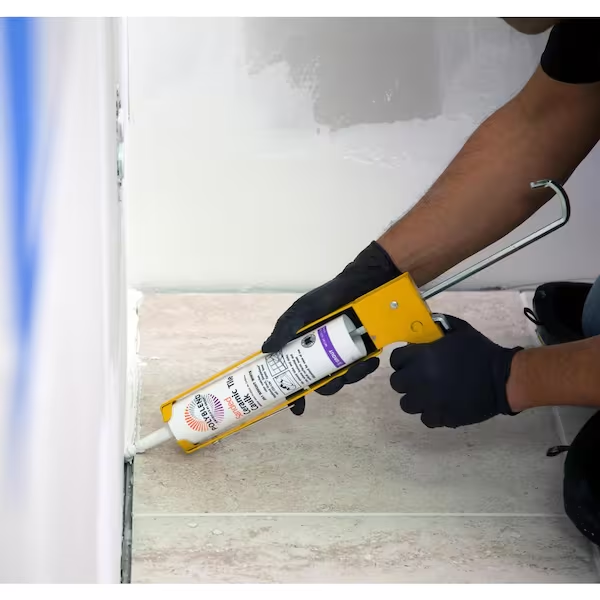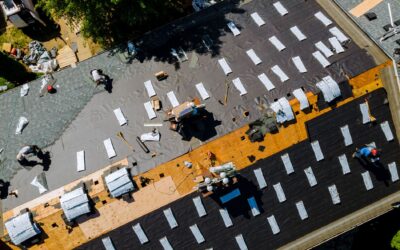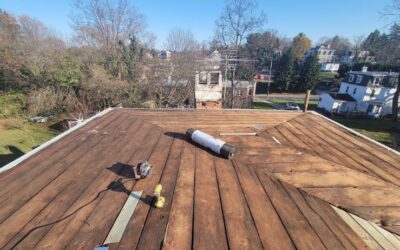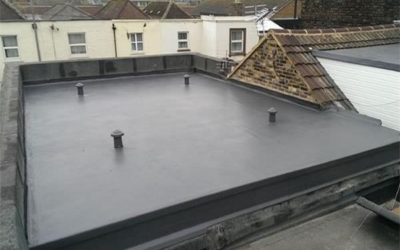Are you interested in learning about roofing material ? You are in the right place! Every roof has a structural part comprising beams, rafters, and the boards covering them. This structure transfers the weight of the roof and accumulated elements (snow, rain) to the building’s walls and foundation. The roofing material is the outermost layer of the roof, directly exposed to the elements. It provides the first line of defense against rain, snow, wind, sun, and other environmental factors.
Roofing materials come in many types, and even professionals can find it confusing to choose the right one. This confusion can intensify, especially for DIYers attempting to repair their home’s roof. We understand – it’s a tough decision!
Whether you are a pro roofer or a DIY enthusiast, our guide has valuable insights. This comprehensive overview will introduce various roofing materials and highlight their features. If you wonder which roofing material will suit your needs, you want to take advantage of this article.
First things first, consider the type of roof you have. We will break down roofing materials into pitched and flat roofs. Let’s get started!
1. Pitched Roofs
A pitched roof features a peak or sloping surface exceeding 10 degrees. Builders often use this roofing type for residential buildings, and you will find many houses in Philadelphia and New Jersey with pitched roofs. Now, let’s discuss the most common materials used to cover a pitched roof.
a. Asphalt Shingles
Shingle roofs are popular choices for pitched roofs. When a roof has a higher pitch, you can usually see it clearly from the ground. A pitched roof is where shingles become helpful. Shingles are individual pieces installed overlapping, adding an extra layer of protection to keep your property dry. Shingles are made of different materials. Asphalt shingles are most popular due to their affordability and easier installation.
They are made of fiberglass, asphalt, and ceramic granules and come in four main types:
- Three-tab shingles are the most basic and cheapest type, but they are not very durable and may only last 15-20 years.
- Architectural shingles have two layers and are more durable than three-tab shingles, lasting up to 30 years. They also cost more.
- Designer shingles are similar to architectural shingles but have a wider variety of colors and styles.
- Upgraded architectural shingles are the most durable type of asphalt shingle and can last up to 50 years. They are also the most expensive.
Most roofers recommend installing just one layer of asphalt shingles, but you may be able to install a second layer on top of an existing layer without removing it.
When choosing asphalt shingles, it is essential to consider your budget, the climate in your area, and the style of your home.
Asphalt Shingles
b. Slate Shingles
Slate shingles are super solid and fancy, lasting up to 200 years with some care. But they come with a hefty price tag. Plus, they are heavy, so your house might need reinforcement to hold them up, adding to the cost.
There are two main types of slate shingles:
- All-natural stone: These are the toughest, lasting centuries but the most expensive and heaviest.
- Mixed with other materials: These are lighter and cheaper than pure stone but will not last as long.
So, if you want a super durable, beautiful roof that will turn heads, slate is a great choice. But be prepared to pay a premium for it!
Slate Shingles
c. Composite Shingles
Composite shingles are roofing materials made from recycled plastic, rubber, or newly manufactured polymers. They are super tough and can withstand severe weather and impacts well, having some of the highest ratings in the market. This rating means they can withstand strong winds and heavy rain for approximately 50 years.
But durability is not all they offer. Do you want your roof to look like fancy slate or traditional wood shakes? Composite shingles can be designed to mimic various styles, providing you with the desired appearance while maintaining durability. Plus, they come in multiple colors to match your home’s personality.
Composite Shingels
d. Solar Shingles
Gone are the days of choosing between clean energy and aesthetics. Solar shingles offer a compelling alternative to traditional solar panels. These innovative shingles share the familiar appearance of their asphalt counterparts but can also convert sunlight into usable electricity.
Their lightweight, flexible nature makes them easier to handle and work with than heavier panels. Naturally, this cutting-edge technology comes at a premium. Solar shingles typically range from $20 to $30 per square foot compared to traditional panels. However, this investment yields long-term benefits. You are powering your home with clean energy and enhancing its value with a modern, sleek roof that aligns with environmentally conscious design trends.
Solar Shingles
e. Metal Panels
Metal roofing is gaining more popularity due to its solid and lasting qualities. It’s easy to care for and withstands harsh weather, fire, and snow. This lightweight material comes in aluminum, copper, stainless steel, and zinc, with plenty of color choices. You can use it on different homes like modern, rustic, or beach-themed homes. Some metal roofs last over 75 years; when it’s time for a change, many can be recycled.
Metal Panels
f. Clay or Concrete Tiles
Clay and concrete tiles bring a touch of the desert or coast to your home. Both look stunning, with interlocking shapes and a wide range of colors. They are also tough, standing strong against the wind.
But what is the difference? Clay tiles will last over 100 years with some care, but they can be costly and take time to install. Concrete tiles are usually one-third cheaper than clay, but they will need replacing twice as often, lasting approximately 50 years.
Which one is right for you? If you are looking for the ultimate in longevity and are okay with the investment, clay is the way to go. But concrete might be your perfect match if you want a beautiful, sturdy roof at a lower price point. However, consider that using these tiles for slopes above 19/12 is not a good idea since tiles on very steep roofs can rattle.
Clay and Concrete Tiles
2. Flat Roofs
Contemporary buildings often have flat roofs; the same goes for row houses. Different roofing options are available, both old and new, and designed for flat or low-sloped roofs.
a. Built-Up Roofing (BUR)
Built-up roofing (BUR) is one of the oldest flat roof materials. It consists of felt or fiberglass layers coated with tar or asphalt, forming a waterproof shield. BUR is also known as “tar and gravel” roofing; the top layer is often covered with gravel or stones, safeguarding the roof from debris and sunlight.
BUR has been around for a long time and is a proven roofing system praised for its durability, ability to resist water pooling on flat roofs, and weather damage. The multiple layers of felt or fiberglass offer extra strength and protection, and the tar or asphalt coating ensures a reliable waterproof seal.
This roofing type is relatively easy to install but may release harmful fumes during installation. However, it provides a cost-effective solution for flat roofs. It is also straightforward to repair and maintain, lasting up to 20-30 years with proper care.
Built-up Roofing
b. Rubber
Rubber roofs are quite common in Philadelphia, with various types available. When people mention a rubber roof, they often mean a Modified Bitumen Roofing system. This system combines asphalt with a plastic or rubber compound to enhance the material’s lifespan and flexibility. This roofing type is durable, resistant to punctures and tears, and provides a reliable solution for flat roofs.
Modified Bitumen comes in rolls, and installing it is relatively easy and cost-effective for flat roofs. It’s also straightforward to repair and maintain, lasting up to 20-30 years with proper care. The installation methods include torch down, adhesive, ballasted with rocks or pavers, and securing with mechanical fasteners.
This roofing type is suitable for flat roofs in various climates, offering good resistance to rain, snow, high winds, and damage like punctures and tears.
Rubber Roof
c. Ethylene Propylene Diene Monomer (EPDM)
EPDM (Ethylene Propylene Diene Monomer) is a single-ply flat roofing material crafted from synthetic rubber. It’s a popular choice for flat roofs because it’s durable and flexible, standing up to UV rays, ozone, and extreme temperatures. EPDM roofing is a single-ply membrane in large sheets, making installation quick and easy. You can install it using adhesive or mechanical fasteners on various roofing surfaces like metal, concrete, and wood.
EPDM roofing is easy to maintain and repair, with a 20 to 30-year lifespan. It is eco-friendly and made from recycled materials. EPDM roofing is available in black and white, and the white color can reflect sunlight, reducing the heat absorbed by the building.
d. Fiberglass or Glass Reinforced Plastic (GRP)
Fiberglass flat roofing, or Glass Reinforced Polyester (GRP) roofing, is a popular choice for flat roofs. It’s well-liked because it’s tough, strong, and lasts a long time. This roofing type combines glass fibers with polyester resin, creating a flexible material that can handle harsh weather, UV rays, and chemicals.
One great thing about GRP roofing is that it’s strong but not heavy. The finished GRP roof looks clean and smooth and comes in various colors, making it visually appealing. A GRP roof can last about 25-30 years. However, there are some drawbacks.GRP roofing can only be installed during dry weather, which can be challenging. It also requires special tools and products, making it a more expensive choice for flat roofs. Installing GRP roofing is more involved than just rolling out material. You can find information here if you want to know how it’s done.
Ethylene Propylene Diene Monomer
e. Thermoplastic Olefin (TPO)
TPO, short for Thermoplastic Olefin, is a type of flat roofing material made from special plastic. It’s a thin layer designed for flat or slightly sloped roofs. It is composed of robust plastic, a material that has gained importance for its exceptional ability to deflect harmful UV rays, leading to energy savings and a subsequent reduction in air conditioning expenses. Plus, it’s tough and resilient to punctures, tears, and even harsh chemicals. It is also 100% recyclable.
Installing TPO involves mechanically attaching TPO to the roof and using heat to weld the seams together. This method ensures the roof is sealed tightly, preventing leaks and drafts. Adding to its appeal, it comes in various thicknesses and even colors, but most people recognize it as the “white roof.” So, if you are looking for a durable, energy-efficient, and easy-to-install roof, TPO might be your happy ending!
f. Polyvinyl Chloride (PVC)
PVC, or Polyvinyl Chloride, is a popular flat roofing material because it’s strong and can handle chemicals, fire, and extreme temperatures. It is made from thermoplastic material and is commonly used for commercial buildings, but there are times when it has residential applications.
PVC roofing comes in big sheets, making installing it quick and easy. Use adhesive or mechanical fasteners to install it on different surfaces like metal, concrete, and wood.
PVC roofs can last 20-30 years, longer than many other flat roofing materials. These roofs are also easy to take care of and fix. PVC roofing helps save energy by reflecting sunlight and keeping the building cool, lowering air conditioning costs.
Polyvinyl Chloride
Conclusion
Overall, each roofing material has unique characteristics suitable for a particular roof and climate situation. Now that you are familiar with various roofing types, remember the crucial role roofing plays in safeguarding your home. For those fortunate enough to call Philadelphia or South Jersey home, the Matrix team stands ready to assist. Matrix Company Solutions Corp., an experienced 203(k) and HomeStyle loan contractor, provides FREE Consultations and Estimates for all renovation projects, including roof repairs. Don’t hesitate to reach out today, and let us assist you in making the best choice for your home.










0 Comments